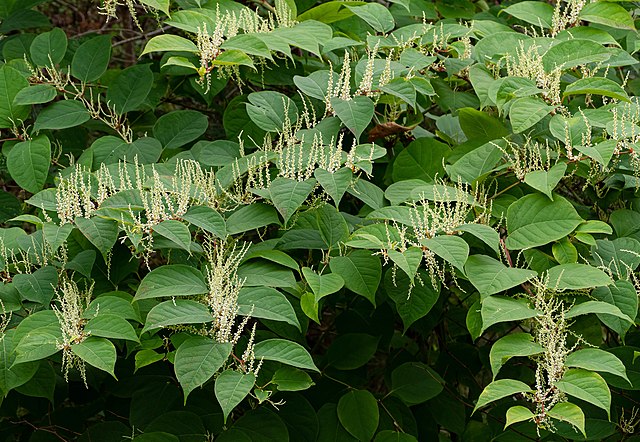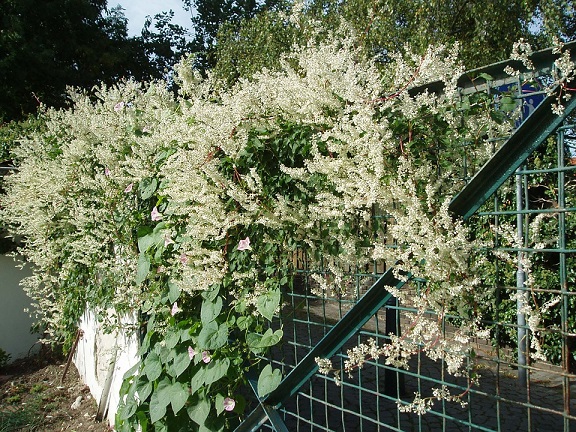
Japanese knotweed is an invasive species of perennial weed, meaning it lives for longer than 2 years. Due to their robust and penetrative rhizomes (stems), their growth is difficult to control. The presence and over-growth of knotweed can cause many issues to outdoor spaces and building infrastructures surrounding the plant.
Here is everything you need to know about Japanese knotweed! Use the handy contents below to skip straight to a section.
What Is Knotweed?
Japanese knotweed, also known in Latin as Reynoutria japonic or Fallopia japonica, is a perennial weed that has been named as an invasive species in the UK. This stubborn plant can cause damage to outdoor spaces and weaken nearby building infrastructures due to its long-reaching, relentless creeping rhizomes (roots) that can anchor themselves 7 metres horizontally and 2+ metres down into the ground.
Japanese knotweed's growth is difficult to control due to the pace at which it can spread, causing issues for property owners across the country. In some cases, knotweed can reduce a property's value due to the maintenance tasks that come with it.
Knotweed thrives in late spring, all the way through to autumn. It has been noted that Japanese knotweed treatment is most effective when completed in summer.
Japanese Knotweed Appearance

Japanese knotweed has a differing appearance, depending on the season. But, generally, you can identify knotweed through its heart/shovel-shaped leaves which are up to 14cm in length, and are arranged in a zig zag pattern across the stems.
In the spring, you will be able to see red/purple shoots emerging at ground-level. From this, bamboo-like canes can grow up to 7ft tall! As summer draws to a close and the early autumn begins, you'll be able to see trumpet-shaped, cream-coloured flowers in clusters of up to 6 inches long.
Japanese Knotweed Hotspots
There are many Japanese knotweed hotspots spread across the UK. Japanese knotweed was introduced to the Netherlands, Europe in 1849. However, the first recording of knotweed in the wild was in Maesteg, South Wales in 1886.
Its hotspots are usually in urban areas with lots of inhabitants. These areas include riverbanks, fields, or areas of garden or turmoil waste. So, where can you find Japanese knotweed in the UK?
These are the areas most affected by knotweed:
How to Get Rid of Japanese Knotweed
There are different methods to get rid of this pesky weed, but we believe that herbicide treatment is the best way to get rid of Japanese knotweed. Compared to other methods of excavation and burning, it is the most cost-effective solution to free your garden from the knotweed's reign.
We shout about herbicide knotweed treatment because this method keeps the rhizomes at bay which will prevent and avoid any regrowth. With excavation and burning, there is the risk of damaging your existing garden's plants and surroundings, alongside the risk of rhizomes clinging to the soil and re-forming.
**
Whilst we may recommend herbicide treatment to get rid of Japanese knotweed, we also offer excavation services to suit all of our customers. You can learn more about our treatment options and make an enquiry here. Get in touch if you have any questions about the best way to get rid of Japanese knotweed on your property 029 2039 7554.
Not sure whether you have Japanese knotweed on your property? Click below to arrange a FREE, NO-OBLIGATION knotweed survey where we can identify any knotweed for you and suggest an effective course of action.
FREE KNOTWEED SURVEY >>
